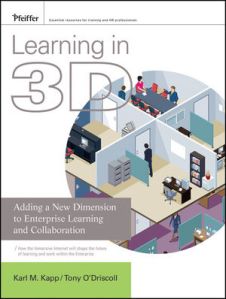 I was asked a question the other day that made me pause before responding. The question was:
I was asked a question the other day that made me pause before responding. The question was:“Where does the performance consulting process end and the “A” in the ADDIE process begin?”
I paused because, in reality, the separation is not so cut and dry. There is overlap. So, in this entry, I’ll address the separation and overlap. Please comment and share your insights as well.
Let’s first define what we mean by the PC process and ADDIE process.
- The PC process we’re referring to here is a performance analysis model (e.g., Gilbert’s Behavioral Engineering Model).
- The ADDIE process is an instructional design model. ADDIE stands for Analyze, Design, Develop, Implement, Evaluate.
In regards to the question posed above, it’s the “A” step that creates some confusion between these two processes. The tasks in this “Analyze” step include: clarifying the instructional problem, establishing instructional goals and objectives, assessing the audience’s needs, examining learners’ existing knowledge, and considering the learning environment, constraints, delivery modalities, and timeline.
Notice that the focus here is on “instruction.” That focus presumes that instruction is the solution to a performance problem. Indeed, sometimes it is. How do we arrive at this conclusion? We arrive at it through the PC process.
Let’s break down the distinctions between the PC Process and ADDIE “A” in the table below:
| PC Process | “A” in ADDIE Process |
| Focuses on business and performance outcomes | Focuses on an instructional outcome |
| Concerns itself with the desired behavior and the environment necessary to support that behavior (Performance = Behavior x Environment) |
Concerns itself with the learning objectives necessary to support the desired behavior |
| Endeavors to change performance in order to impact the business | Endeavors to educate in order to change behavior |
| Examines root causes for a performance problem | Examines knowledge gap for a training problem |
| Defines success primarily in terms of on-the-job application and business impact | Defines success primarily in terms of satisfaction, comprehension, and on-the-job application |
With these distinctions drawn, it’s important to note that the overlap between the two elements often occurs when a knowledge and skill gap is uncovered by the Performance Consultant as a root cause for a performance problem.
Information about that knowledge and skill gap can be passed from the Performance Consultant to the Instructional Designer for the training solution. That information does assist the Designer in the analysis phase of the ADDIE process. It’s good background. Now, the Designer can dig into the knowledge and skill gap further by conducting a thorough training needs analysis. It’s this TNA that allows for the successful design, development, implementation, and evaluation of the training solution.







